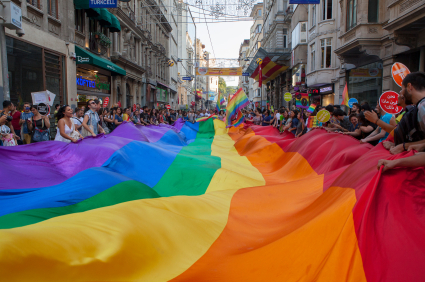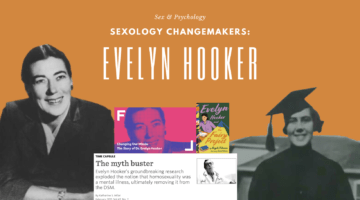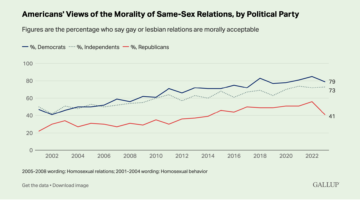What Percentage of the Population is Gay?
January 16, 2012 by Justin Lehmiller
Every semester, students in my Human Sexuality course ask me what percentage of the population is gay or lesbian. Before answering this question, I usually give the class an opportunity to guess. Although this invariably leads to a wide range of responses, the most frequent number that comes up is 10%, and many students who cite this statistic are convinced that it is a fact. But are they right? Probably not. The 10% statistic comes from research conducted by Alfred Kinsey in the 1940s, in which he found that 10% of the men in his sample were gay. However, Kinsey’s participants were not representative of the overall population (for one thing, they were all White and most lived in big cities). He also oversampled from the gay community. Thus, we have to view his findings with a bit of caution. More recent research employing better sampling methods has reliably found that the number of sexual minorities in the population is a bit smaller.
Before we get into specific numbers, please be aware that this is a difficult question to answer for several reasons. First, researchers get different numbers depending upon how they define “sexual orientation”—is it a label/identity, or is it a behavior? This is a major issue because sexual labels and behaviors do not always match up. For example, there are many men who self-identify as heterosexual, but who have sex with other men on the “down-low.” Generally speaking, the percentage of people who identify as gay or lesbian tends to be lower than the percentage of people who have ever had sexual contact with a member of the same sex. Second, when you survey people about their sexual orientation and sexual practices, not everyone is honest, which biases the results (e.g., some gay and lesbian people might be afraid to report their true sexuality because they are not comfortable with their identity or have concerns about being outed).
With this in mind, let’s look at the results from two nationally representative surveys conducted in the United States. The first study, originally reported in 1994, found that 2.8% of men and 1.4% of women identified as homosexual or bisexual [1]. The second study, reported in 2010, found that about 8% of men and 7% of women identified as something other than heterosexual [2]. How do we explain the large discrepancy between these studies? Are there more gay people now than there were in the 1990s? That seems unlikely. The higher numbers in the more recent survey probably reflect the fact that sexual minorities simply feel more comfortable disclosing their sexual identities in a day and age when homosexuality is more socially accepted. The newer numbers are also higher because they collapsed across all non-heterosexual identities (gay/lesbian, bisexual, and other).
In light of these findings, it is interesting to note that most people significantly overestimate the number of gays and lesbians who are out and about in the world. For instance, a 2011 Gallup poll found that, on average, Americans’ estimated that 25% of the population is homosexual [3]. It is not clear why people’s estimates differ so much from what researchers have documented.
In short, although we cannot say with certainty what percentage of the population is gay, the best available scientific evidence suggests that the numbers are probably a little lower than most of us think.
Want to learn more about Sex and Psychology ? Click here for previous articles or follow the blog on Facebook (facebook.com/psychologyofsex), Twitter (@JustinLehmiller), or Reddit (reddit.com/r/psychologyofsex) to receive updates. You can also follow Dr. Lehmiller on YouTube and Instagram.
[1] Laumann, E. O., Gagnon, J., Michael, R., & Michaels, S. (1994). The social organization of sexuality: Sexual practices in the United States. Chicago: University of Chicago Press.
[2] Herbenick, D., Reece, M., Schick, V., Sanders, S. A., Dodge, B., & Fortenberry, J. D. (2010). Sexual behavior in the United States: Results from a national probability sample of men and women ages 14-94. Journal of Sexual Medicine, 7(Suppl. 5), 255-265. doi: 10.1111/j.1743-6109.2010.02012.x
[3] Morales, L. (2011). U.S. adults estimate that 25% of Americans are gay or lesbian. TheGallup Daily. Retrieved from http://www.gallup.com/poll/147824/Adults-Estimate-Americans-Gay-Lesbian.aspx
Image Source: iStockphoto
You Might Also Like:

Dr. Justin Lehmiller
Founder & Owner of Sex and PsychologyDr. Justin Lehmiller is a social psychologist and Research Fellow at The Kinsey Institute. He runs the Sex and Psychology blog and podcast and is author of the popular book Tell Me What You Want. Dr. Lehmiller is an award-winning educator, and a prolific researcher who has published more than 50 academic works.
Read full bio >


